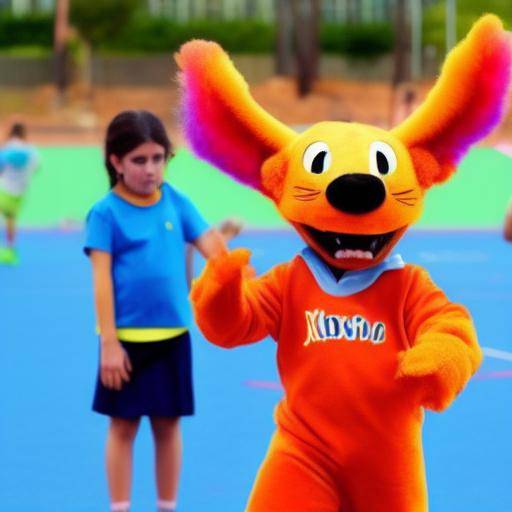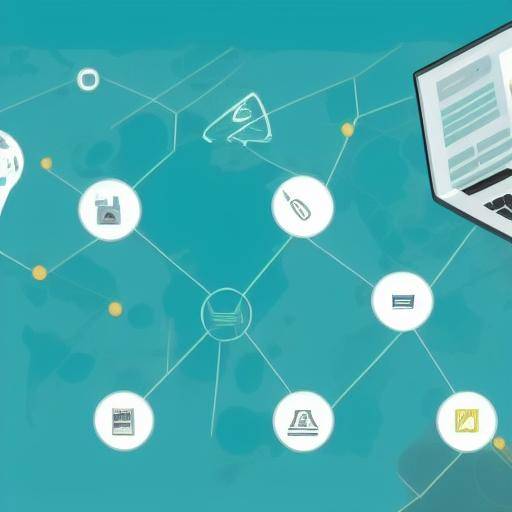
The development of language at the preschool stage is of paramount importance, as in this period children are at a crucial moment in their cognitive and linguistic development. In this article, we will comprehensively explore effective strategies and approaches to enhance the development of preschool language, approaching from a historical and theoretical perspective to offering evidence-backed practical advice. We will also discuss future trends and predictions in this field to better understand how to address the challenges and opportunities presented.
Introduction
In preschool, children experience extraordinary development in their linguistic capacity. It is at this time when language becomes a vital tool for the communication and understanding of the world around them. It is therefore essential to provide them with adequate support to reach their maximum potential in this area. In this article, we will explore the most effective strategies to promote the development of preschool language, providing both historical background and practical advice backed by field experts.
Background and Historical Context
The development of language at the preschool stage has been of interest for decades. Throughout history, various theoretical trends and studies have contributed to our current understanding of how children acquire and develop language. From the first research of psychologists and linguists to current approaches based on cognitive neuroscience, there has been significant progress in understanding this complex process.
Critical milestones have been identified in understanding the development of preschool language, such as the Theory of Albert Bandura's Social Learning and Jean Piaget's Cognitive Approach, which have laid the foundation for numerous educational and early intervention strategies. Recognition of the importance of a stimulating and enriching environment at home and school has also played a key role in the development of language at this stage.
Detailed Analysis of Preschool Language Development
Understanding the development of preschool language is crucial for teachers, parents and health professionals. It is at this point where not only the acquisition of vocabulary and the construction of phrases are manifested, but also the understanding of the structure of language and the capacity of expression.
Current studies have shown that a holistic approach that integrates both the cognitive and emotional aspect is essential to promote optimal linguistic development in preschools. A combination of interactive games, shared reading, stimulating conversations and the promotion of language use in different contexts are key strategies for achieving this goal.
Comprehensive Review of Effective Strategies for Language Development
To ensure the development of successful language, it is essential to consider the environment in which the child develops. The linguistic stimulus at home and in the school environment plays a critical role in this process. Strategies such as adult language modeling, the promotion of reading loudly, storytelling and the use of interactive multimedia tools have proven to be effective in enriching the linguistic repertoire of children.
At the same time, it is important to consider the individuality of each child and to adapt language development strategies according to their abilities and pace of learning. Early stimulation and specific interventions for children who present difficulties in language development are also fundamental aspects to be taken into account.
Comparative Analysis of Preschool Language Development
By comparing strategies for the development of preschool language in different contexts, there is a need to consider cultural, linguistic and socio-economic aspects. Linguistic diversity directly influences how children internalize and express language, which requires specific and sensitive approaches to cultural diversity.
Practical Tips and Accessible Recommendations
Based on best practices and research-backed approaches, it is possible to offer practical advice for the successful implementation of language development strategies in preschools. Some of these recommendations include:
- Promote reading aloud and use of varied books that reflect cultural diversity.
- Integrate language naturally into everyday activities, such as cooking together or playing.
- Promote social interaction among children to enrich their vocabulary and communication capacity.
- Use interactive digital resources that offer activities adapted to the linguistic development of preschools.
Industry Perspectives and Expert Reviews
In order to obtain a complete understanding of the development of preschool language, it is crucial to consider the perspectives of experts in the field of education, pedagogical and child development. Researchers, health professionals and educators offer valuable insights into the most effective strategies, as well as the opportunities and challenges they face in the field of language development at the preschool stage.
The views of experts highlight the importance of early interaction in language-rich environments, as well as the fundamental role of individualized care for children who may require additional support. In addition, the need for close collaboration between teachers, parents and health professionals is emphasized to optimize the development of preschool language.
Case Studies and Practical Applications for Language Development
Practical case studies offer concrete examples of how language development strategies are applied in real environments. These cases illustrate not only successful results, but also the inherent challenges and lessons learned. Examples of different educational, cultural and socio-economic environments enrich our understanding of the diversity of situations in which these strategies are implemented.
In analyzing the results of these practical applications, valuable lessons can be drawn that guide educators, parents and professionals in the implementation of effective strategies for the development of preschool language.
Future trends and predictions related to Language Development
Technological advancement and the evolution of educational and pedagogical practices pose new opportunities and challenges in the development of preschool language. The use of technological tools, such as interactive applications and online educational platforms, is expected to remain an integral part of language development strategies.
In addition, a greater focus is expected on personalized attention and the inclusion of linguistic diversity in educational strategies. Collaboration between different disciplines, such as linguistics, psychology and neuroscience, will also open new avenues of research and application of innovative methods to enhance the development of preschool language.
Conclusions and FAQs
In conclusion, the development of language in the preschool stage is a complex process that requires comprehensive strategies, sensitive to diversity and supported by evidence to promote the maximum linguistic potential of children. In understanding strategies, perspectives and practical applications related to the development of preschool language, we are better prepared to effectively support this important aspect of child development.
Frequently asked questions (FAQs)
1. How can language development be encouraged in preschool children at home?
The development of preschool language can be stimulated at home through activities such as reading out loud, storytelling, speech games, songs and stimulating conversations. The enabling family environment and the constant use of language in everyday situations are essential to enrich the linguistic repertoire of children.
2. What is the importance of social interaction in the development of preschool language?
Social interaction plays a crucial role in the development of preschool language, as it gives them the opportunity to practice language in real contexts, expand their vocabulary and understand the subtleties of communication. Interactions with peers and adults in diverse environments enrich their ability to express and understand language more effectively.
3. What factors can influence the development of language in preschools?
Factors that may influence the development of preschool language include family environment, exposure to different languages, possible hearing or speech difficulties, as well as linguistic stimulation received both at home and in educational settings. Sensitivity to cultural and linguistic diversity also plays a key role in the development of language at this stage.
4. How can parents and teachers identify potential difficulties in developing preschool language?
Parents and teachers can identify potential difficulties in developing preschool language by observing communication, understanding and linguistic expression patterns. Any sign of significant delay in language development should be addressed early, and it is essential to seek guidance from health professionals or specialized educators.
5. What is the importance of reading in the development of preschool language?
Reading at the preschool stage has a significant impact on the development of the language of children, as it exposes them to a wide vocabulary, diverse linguistic structures and stimulates their imagination and understanding of the world around them. The shared reading between parents, caregivers and teachers fosters a positive relationship with language and promotes literacy skills from an early age.
6. What are the necessary modifications to adapt language development strategies in preschools to cultural diversity?
Preschool language development strategies should be adapted by considering cultural and linguistic diversity to ensure their effectiveness. It is essential to incorporate materials and experiences that reflect the cultural and linguistic diversity of children, as well as to consider their family and community contexts to enrich their linguistic development.
By prioritizing these best practices and fully understanding the development of language in preschools, educators, parents and professionals can contribute significantly to the optimal linguistic growth of children at this crucial stage of their development.






















































